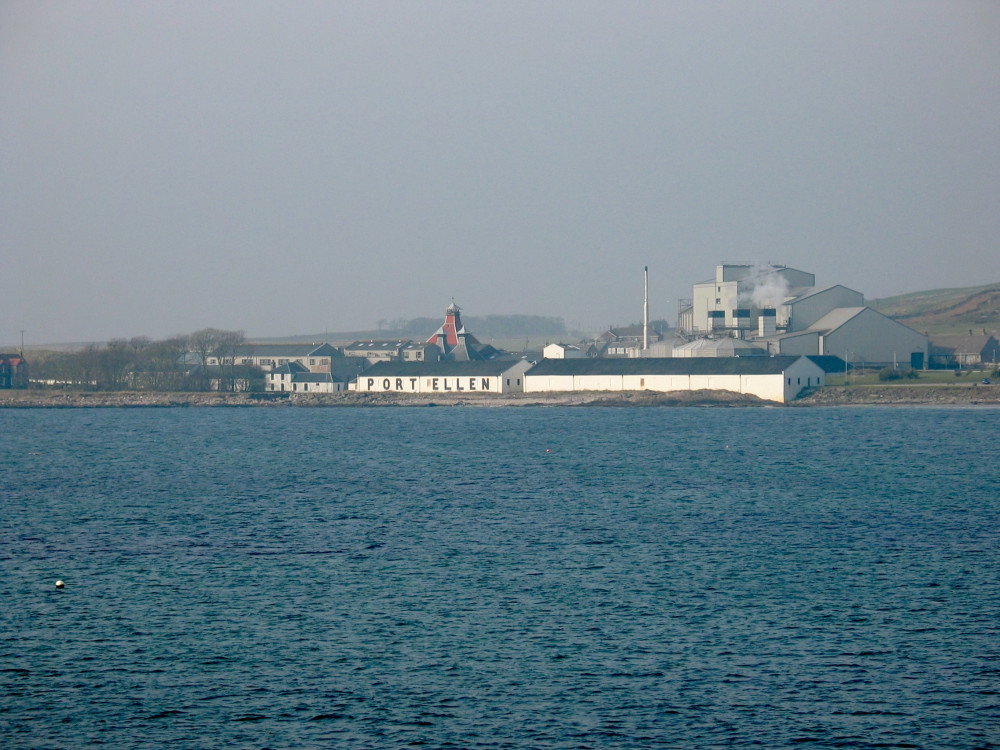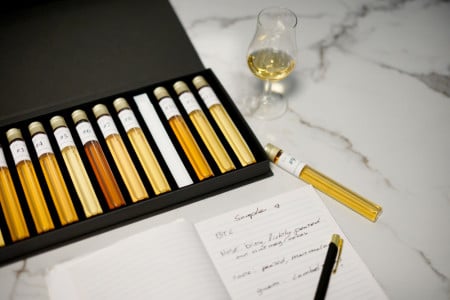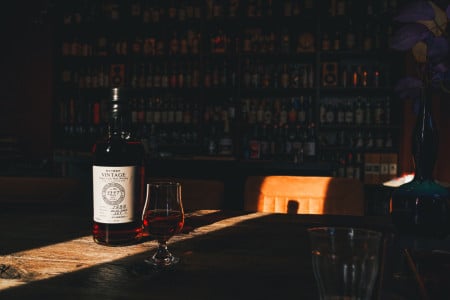Floor maltings versus Drum maltings
In this type of drum maltings, the green malt is no longer dried with a peat fire but with oil stoves, which makes the green malt dry faster. In order to give the malt some peat character, a peat smoke ‘fire’ is lit under the floor with the drying green malt, not a peat fire with flames but a ‘smoke fire’. As soon as real fire comes in, a sprinkler extinguishes it with water until it starts smoking again. The smoke coming from this ‘peat smoke fire’ is blown through the drying bed of green malt with the help of a turbine along with the hot air from the oil stoves. This smoke contains mainly the phenol guaiacol, but virtually no meta-cresol or ortho-cresol. For this reason, the character of most Islay malt whiskies has changed, from slightly smoky and heavily medicinal (iodine) to a true smoke bomb. This change has been very slow because most of the phenols are in the lagoon due to their high boiling point. In second distillation, as they use it in Scotland, the distillation is divided into three parts; the preliminary run, the middle run and the afterrun. The preliminary run takes a very short time and is full of low boiling point flavour compounds, which already evaporate at a low temperature. The middle run, the part from which the final whisky is made, starts with the evaporation of the lighter flavour compounds followed by more heavier ones. The heavier ones, such as phenols, have the ability to dissolve in alcohol and thus hitch a ride, allowing them to be distilled anyway. Some of the phenols therefore end up in the middle run, but most in the after run. This is partly because when the middle run is finished, the temperature in the boiler goes up during the afterrun. We know that the before and after run is always reused in the next second distillation. This is done to avoid any short-term flavour difference, and in this case it has been proven to work.
When Port Ellen distillery received malt from the malting floor from 1967 to 1973, the amount of the phenols meta-cresol and ortho-cresol in the whisky was built up in the after-distillation. However, the supply of these phenols in the lagoon decreased sharply after the opening of the drum malt house in 1973. Thus, the phenols meta-cresol and ortho-cresol disappeared from the afterflow through the middle course and the phenol guaiacol multiplied there. This process happened very slowly and the flavour changed from medicinal-iodine to a smoky flavour after years. Consciously or unconsciously, Port Ellen made two types of whisky in its 16 years of existence, a medicinal and a smoking whisky. Again, the question is which of the two will produce the new Port Ellen. If it becomes the smoky one, the malt will simply come from the drum maltings, and it won't stand out too much from the island's other whiskies. If it becomes the medicinal with the iodine aroma, it will first need to build another floor malt house, where the green malt is actually dried with a peat fire.







